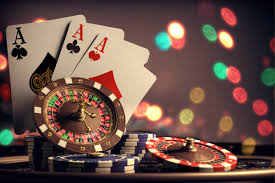
Slot machines, also known as fruit machines or one-armed bandits, have been a popular form of entertainment in Raja Akurat around the world for decades. These iconic machines are not only a mainstay in traditional brick-and-mortar casinos but have also found their way into the digital realm, with online slots becoming increasingly popular. In this article, we’ll take a deep dive into the world of slot machines, exploring their history, how they work, and the psychology behind their appeal.
The History of Slot Machines
The concept of slot machines dates back to the late 19th century. The first mechanical slot machine was invented in 1894 by Charles Fey, a San Francisco-based mechanic. This machine, known as the “Liberty Bell,” featured three spinning reels with various symbols, including horseshoes, diamonds, spades, hearts, and a Liberty Bell. The Liberty Bell machine was a hit and paved the way for the development of more complex slot machines.
Over the years, slot machines have evolved significantly. In the 1960s, the first electromechanical slot machines were introduced, featuring new features such as flashing lights and electronic sounds. The 1970s saw the advent of video slot machines, which used a graphical display to simulate the spinning reels. Today, most slot machines are digital, with complex algorithms determining the outcome of each spin.
How Slot Machines Work
Slot machines are based on the concept of random number generation (RNG). Each time a player presses the spin button, the slot machine’s RNG generates a random number, which corresponds to a specific combination of symbols on the reels. The outcome of each spin is completely random and independent of previous spins.
Modern slot machines are equipped with a computerized system known as a random number generator (RNG), which ensures that each spin is completely random and independent of the previous spin. This means that there is no way to predict the outcome of a spin based on previous spins or the symbols that appear on the reels.
The Psychology of Slot Machines
Slot machines are designed to be highly engaging and immersive, with vibrant graphics, captivating sound effects, and exciting bonus features. These elements are carefully crafted to keep players entertained and engaged for longer periods.
One of the key psychological principles behind slot machines is the concept of intermittent reinforcement. Unlike some forms of gambling, such as playing the lottery, where the outcome is determined purely by chance, slot machines provide players with the illusion of control. Players believe that they can influence the outcome of a spin by pressing the spin button at a certain time or using a specific strategy, even though the outcome is determined solely by the RNG.
Another psychological aspect of slot machines is the concept of near misses. Slot machines are programmed to occasionally display symbols that are similar to the jackpot-winning combination, creating the illusion that the player was very close to winning. These near misses are designed to keep players motivated and engaged, even when they don’t win.
Conclusion
Slot machines have a long and fascinating history, evolving from simple mechanical devices to complex digital machines. While their basic mechanics remain the same, modern slot machines are equipped with advanced technology that makes them more engaging and immersive than ever before. Understanding the history, mechanics, and psychology of slot machines can help players make informed decisions and enjoy the game responsibly.
